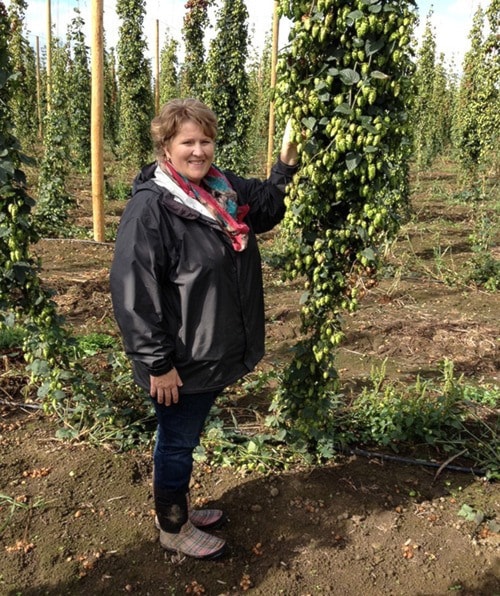Faces, Places and Traces by Mark Rushton
I’m certain, while seeking solace in the shade from this summer’s relentless sun, the most common phrase heard was “Ah, nuthin’ like a cold beer.”
Truth be told, most commercial beers taste pretty much the same, be it Bud or Blue, Coors or Canadian. And that, I’m sure, is what has spurred the phenomenal growth of the craft beer industry.
I recall back in the mid-’90s frequenting Spinnaker’s, a delightful pub on Victoria’s inner harbour. At the insistence of a companion, I tried some of the pub’s own brew. Each had a truly unique and interesting flavour, and in further visits to the picturesque location, I tried others. Some were downright good, others not so to my unsophisticated palate.
At any rate, Spinnaker’s, at least in British Columbia, was the birthplace of brew pubs and the craft beer industry. Many others followed, including Swan’s in Victoria, Granville Island and Mission Springs just across the Fraser from Abbotsford.
Unlike the canned beer most of us consume, craft beer is not really meant to be quaffed cold and quickly, but savoured, often at room temperature.
It requires “a taste for it,” but once tried they are, like a fine and savoury wine, a delight – which is today in great demand.
Thus it is that from a handful of craft breweries in the 1990s, they now number well over 100. And therein lies a problem. For these breweries to develop distinct and often unique flavours they require a key ingredient – hops, and not just any hop but specific ones that have, in various concentrations and flavour, a substance called lupulin.
For more than half a century Sumas Prairie and the farmlands of Chilliwack were covered with hundreds of acres of hop yards. However, as the major breweries began to concentrate their production in central locations, and closed down virtually all of them in B.C., the demand for those hops diminished to the point that the last commercial hop farm in the Valley ceased production in 1995, its massive lines of poles and cables giving way to other agricultural products or, in the case of many areas in Chilliwack, residential and commercial development.
Then along came the craft brewing industry and suddenly hop farming is seeing a revival.
The first one in production on Sumas Prairie began this spring on Cole Road; its three varieties of hops grown specifically for craft brewing. Taking a walk through the dangling vines, Diane Stewart broke open a few hop cones, allowing me to breathe in the essence of each one’s lupulin, a yellowy-green oil that gives craft beer its unique flavor.
To my unsophisticated nose, the minute quantity of this pollen-like substance smelled like pine, with hints of citrus.
The Stewarts’ dairy farm has been in the family for more than three generations, but it saw its last dairy cow 15 years ago. A few years ago a decision was made to either do something with it or sell it – a decision the family was reluctant to make.
Dwayne and wife Diane pondered options, rejecting ideas until hop growing crossed their minds. Researching the economics and demand, they decided to go ahead.
And when I say “go ahead,” they went full tilt boogie. Not only did they create and plant a 10-acre hop yard, they have just installed a $500,000 hop-picking machine. The vines are actually clipped by hand in the field. The machine which looks reminiscent to a printing press, sits in a building, separating the hop cones from the vines.
Built in Germany, it is the first new unit to ever be brought into Canada, and can handle the production of 120 acres of hops in the four-week harvest season.
And that has Dwayne, Diane and family already developing a second hop yard on Vye Road with, I expect, other farmers looking to take advantage in the rebirth of hop growing.
The brew industry too, is so thrilled with the Stewart entrepreneurship that it is staging Abbotsford’s first BrewFest on Oct. 3, with 17 craft beer makers, bands and food booths laid out on a grassy field next to the hop vines.
If you’d like to attend check it out at bchopfest.ca, and hurry because attendance is limited to only 500.
A last interesting fact about hops: around the world, they can only be grown along the 49th parallel. Anywhere more than a couple of hundred miles north or south and they are a crop failure!
markrushton@abbynews.com
